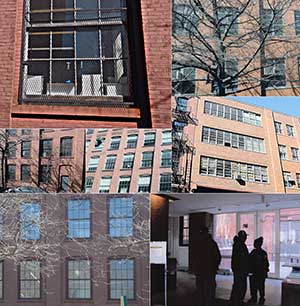
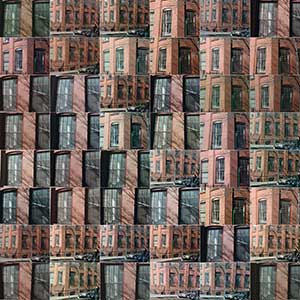
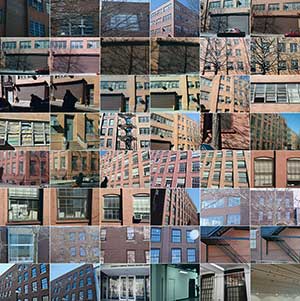
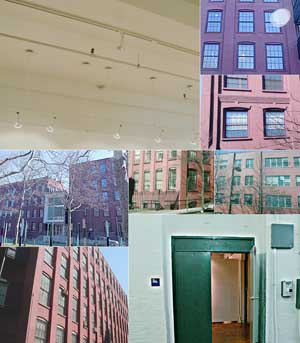
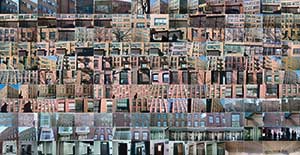
One of my goals is to offer the viewer a rich aesthetic experience in time, one that comes from complex internal relationships between the parts of the art work, a quality more characteristic of older art than of art today. Great polyphonic composers such as Johannes Ockeghem and Johann Sebastian Bach provide one model: multiple parts or melodies interweave in their separateness rather than fusing into harmonies, creating a vast, deep space. In the painting of van Eyck, Dürer, and Cézanne, a preternatural intensity of color and light, celebrating both the glory of the seen world and the painting of its objects, is realized in compositions in which each part vibrates in relation to the whole. I have always tried for related effects in arranging images, but I am also interested in using randomness, as a window onto the actual randomness of the universe — the motion of gas molecules that surrounds us every instant, or the sometimes chaos of our "racing thoughts." I seek to avoid the narrowness of overtly self-expressive art, art dominated by too-specific aspects of the artist's personality, as realized, for example, in the limiting preferences of "tastes," which can become mere tics, and trap the viewer in another's limited, and limiting, psyche.
With Venues 1: Terian Center, I hope to have come closer to realizing a goal that I have been struggling with for more than three years, beginning with a failed attempt to use randomness as one of the organizing principles of a work I finished, printed, and then rejected, Mutations 1: Minturnae. The construction of the works in Venues 1 makes extensive, controlled use of random numbers, and the results, it is my hope, are image arrays that only partly cohere in the earlier sense. Randomness also makes its presence felt here, but, in contrast to my earlier failed effort, it should expand rather than contract these works' aesthetic power. These pieces seem only partially rooted in the "old way of seeing," and in equal part seem to me to preserve some of the chaos of the universe as it actually is, of life as it is actually lived. I hope, too, that my image modifications impart an expansiveness, even limitlessness, to each image, suggesting the endlessly diverse ways of seeing — and of making images of — any object in the world, thus ultimately providing the viewer with a window on the infinite. Hanging works showing a building within the building that they depict is meant to forge a more vital connection between digital imaging and daily seeing.
For Venues 1: Terian Center, I photographed the building that houses my 2009 Pratt Institute one person show. I then selected and slightly corrected 176 of these images, ordering them to depict a walk around the whole of the building, and then inside and up to the gallery. These serve as my "originals." Before being used in any of the "Venues," each image is put through eight different modifications, the degree of each determined by a controlled use of random numbers. These alterations involve hue, contrast, brightness, sharpness or blur, three-dimensional vertical rotation in space, three-dimensional horizontal rotation in space, horizontal cropping, and vertical cropping. Each modified image is used only once, in one work, and then discarded. Some different versions of the same image will look similar, but the chance of two being visibly identical is one in the millions. Most of the modifications are small enough that they could in fact occur in daily seeing: building perspectives change as one moves around them, color and light can change, backgrounds grow soft when one's eyes focus on something closer. But I've also included extremes that are more unique to digital imaging — which has itself come to pervade our world and our consciousness.
Fred Camper
New York, NY
September 10, 2009.